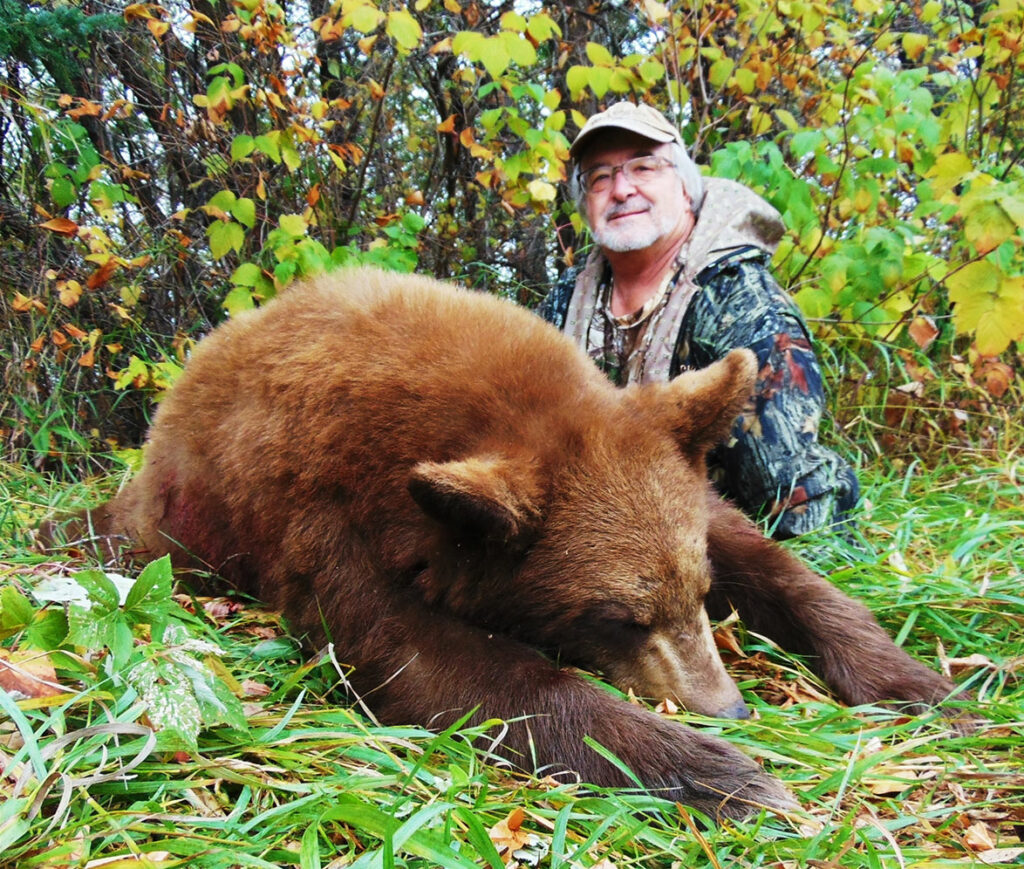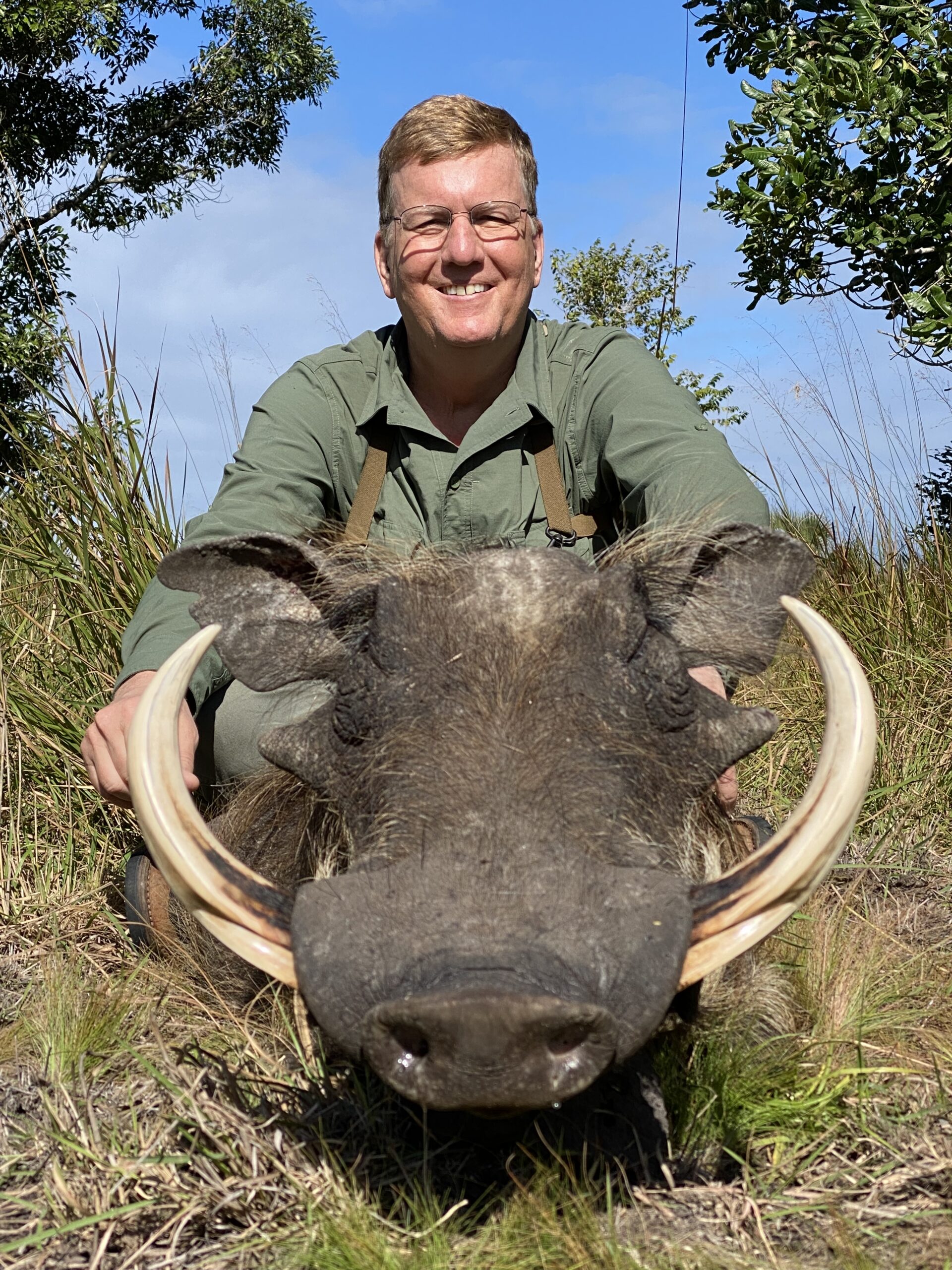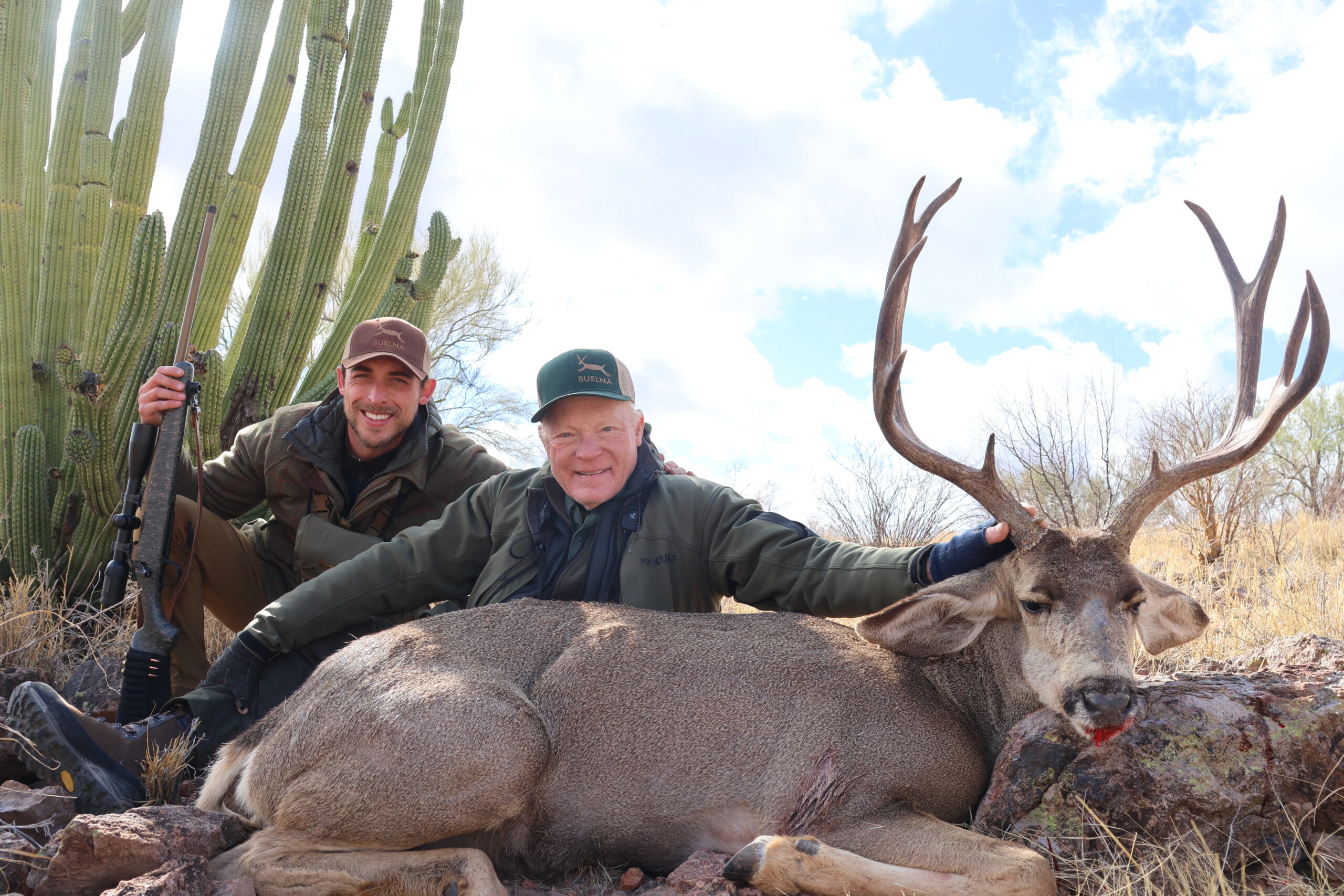I was perched high in a ladder stand against a tall poplar tree in eastern Saskatchewan. Overhead, waves of snow and Canada geese circled in the waning twilight of a crisp and clear late autumn afternoon. The gentle breezes triggered the endless quaking of the leaves of the aspen and poplar trees surrounding my stand.
I was mesmerized by the beauty of the spruce and hardwood forest until I was suddenly jolted back into the reality that I was there for a fall black bear hunt.
Out of nowhere materialized a ghost of a bear—he silently crept into an opening just 40 yards in front of my position. I could not believe what I was seeing. It was an incredibly beautiful bear in cinnamon color phase, brilliantly illuminated by the soon-to-be setting sun.
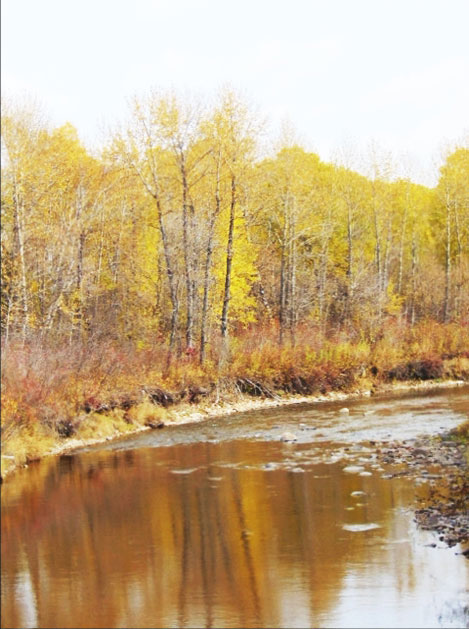
I immediately began trembling, not unlike the leaves of the nearby aspen and poplar trees. In my mind, I repeated what Vaughn Rose, my guide or “hunting consultant” at Woody River Trophy Hunts, had drilled into my head earlier that morning over a steaming cup of coffee.
He told me to forget my expensive binoculars, rangefinder and camera and just concentrate on judging the height of the bear at its shoulders.
His next words were indelibly etched into my mind. He was emphatic about what I should do. “Bill, assess its height, make sure it is not a sow with cubs, wait for a good shot to present itself and then kill the bear—IMMEDIATELY!”
BANG! The Remington .300 Ultra Mag barked like a junkyard dog as the bear completely lifted into the air and pancaked to the ground.
Since my .280 Remington has a “no pass through shot history” and, therefore, produces very little if any blood trail, Lance Miller, the owner and operator of Woody River, graciously offered to let me use his brand new Remington .300 Ultra Mag. After seeing my bear drop in its tracks, I was more than grateful that he loaned me his rifle.
Since the beginning of the fall bear season in late August, 16 clients had bagged black bears, and mine was the only bear taken that was a color phase bear. Vaughn told me two previous hunters had seen this bear and tried to take him, but could not get a good shot.
My adventure began in late fall 2019 as I boarded a plane in State College, Pennsylvania, en route to Winnipeg, Manitoba. There I rented a car for the six-hour drive to the vast prairies of eastern Saskatchewan.
After spending the night at the Grand Winnipeg Hotel, I loaded my duffel bag, gun case and backpack into the rental car and was on the road by 4:30 a.m.
The bright lights of downtown Winnipeg were fading in my rearview mirror as I drove northwest on Canadian Highway 1. It seemed like an eternity before daylight slowly began to peek up over the eastern horizon.
Since I had never traveled to this part of Canada, I could not believe the sight of expansive prairie land, with its thousands and thousands of acres of wheat, canola, beans and peas.
Towns, gas stations and quick shops were non-existent and the endless landscape reappeared over and over like the same scenes from the movie Groundhog Day.
My hunting destination was north of the village of Arran, Saskatchewan.
In a book entitled The Settlement of the Plains by Russell Rockerbie and Duane Rockerbie, the authors, noted that in the Arran area “the early pioneers mostly of Ukrainian descent, and their descendants, turned the sod and tilled the soil in their struggle to build a new homeland.” When I finally arrived at the Woody River Lodge, I was greeted by Deb Miller, the cook and resident concierge, who warmly greeted me and welcomed me for my hunt.
Deb had run a huge farming operation, is a CDL-licensed semi driver and now dabbles in real estate, business ventures and rental properties, as well as working at the lodge during hunting seasons.
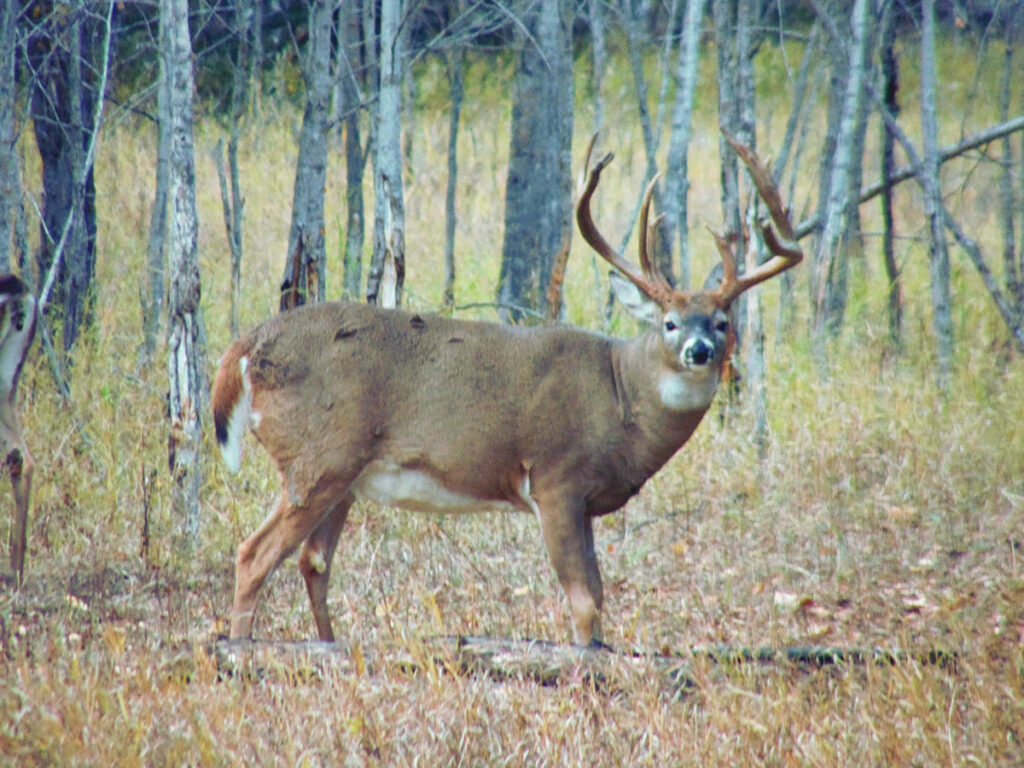
Woody River Trophy Hunts is owned and operated by Lance and Crystal Miller. Lance represents the third generation of German immigrants, whose immediate and extended families settled and farmed the fertile prairies of eastern Saskatchewan.
Most everyone I met in rural Saskatchewan was the “salt of the earth” types. They were very successful in their business/farming ventures, polite and respectful to a fault, engaging and went totally out of their way to make my hunting, dining and lodging experience second to none.
While in camp for five days, I was joined by a husband and wife hunting duo from Georgia and an archery hunter from Toronto. This was the third trip to Woody River for each of them. In fact, Lance proudly boasts a better than 80 percent repeat client rate. Many outfitters would be hard pressed to even come close to this level of client satisfaction and loyalty.
Woody River Trophy Hunts offers a limited number of free-range whitetail hunts and black bear hunts in and along the Porcupine Provincial Forest, which covers the north side of the Swan River Valley.
Their hunting areas are dominated by majestic spruce trees, willow and poplar thickets, steep ridges and old river bottoms.
On the night before my last day to hunt, I approached Deb in the kitchen. Since I knew she worked only from about noon until around 9 p.m., I decided to get a razz out of her.
“Deb,” I said, “I would like to be served Crêpes Suzette with a side of Canadian bacon for my morning breakfast.”
She glared at me with her patented look, ushered me over to the cupboard and handed me a large box of Kellogg’s Cornflakes. With a smirk on her face, Deb then told me, “Let me introduce you to a box of cereal!”
For my next morning’s whitetail hunt, I settled into a very spacious camouflaged box blind, complete with propane heater and very comfy chair.
It was early evening and I was hopeful that a whitetail buck would emerge from the poplar and spruce thickets some 100 yards from my blind.
Truthfully, I was thinking more about my six-hour drive back to Winnipeg the next morning than I was about shooting a whitetail. Since I was already elated over taking a great color phase black bear, the pressure was really off and I was just enjoying the sights and sounds of a spectacular autumn evening.
In a flash, I was catapulted back to reality as I saw a flicker of movement in the trees. Two does appeared and began munching down the treats as I looked at them through my binoculars.
After about five minutes, I saw each doe hesitate, raise her head and look quickly to the right before resuming feeding. They did this three more times.
I have hunted deer in Pennsylvania since 1960 and I knew very well that this behavior usually signals the appearance of a buck. I was not disappointed!
The does scurried off to my left as a beautiful whitetail buck eased into the clearing. Instead of proceeding, he stopped dead in his tracks and stared a hole in the opening of my blind.
Although I had doused my clothes and boots with scent blocker, I noticed the wind was swirling when I got into the blind.
When the buck slowly raised its right front leg, I knew the jig was up. I eased off the safety from my .280 Remington and anchored the crosshairs just behind its shoulder.
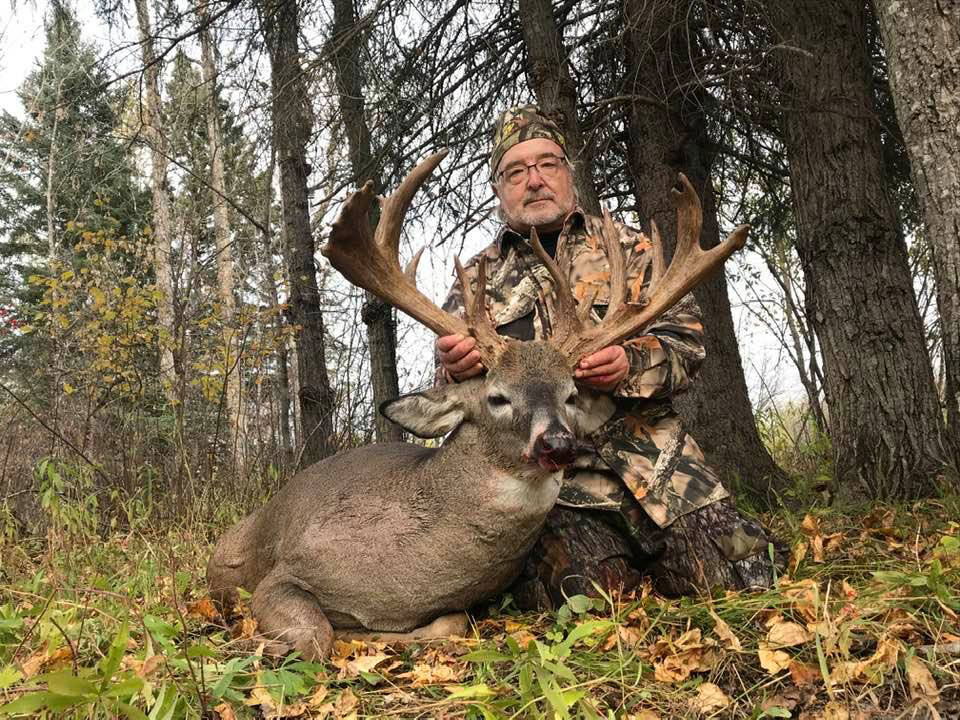
At the report, I could see red on his coat, and he spun and disappeared into the thick brush.
I have hunted with this same rifle for over 40 years and knew full well that there would be no blood trail. Since this was totally unfamiliar hunting territory with dense understory and foliage, I opted to sit back and wait for the buck to bed down.
After what seemed like an eternity, I ambled out of the stand and walked over to the spot where I had shot the buck.
What I saw was just what I had suspected—two tiny drops of blood 10 feet from the impact point and then nothing—I mean no more blood!
Heavily worn trails branched in all directions, and they were full of mud and water. I had no idea which direction the buck used to escape. So I began what I was taught to do many years ago.
I started walking in circles, each circle about ten yards farther out from the previous one—hoping and praying I would soon find a blood trail. No dice.
Stepping very slowly and cautiously, my eyes scanned every stitch of ground and cover in hopes of spotting my buck. Under a cluster of three very tall spruces, I noticed a deep depression in the ground. In the middle of the depression lay a very large, unusually rounded gray-colored “rock.”
Upon further scrutiny, I saw what looked like a big limb protruding out of the rock. As I approached, I soon saw that this was not a rock, but the body of the biggest whitetail buck I had ever seen, let alone shot.
I was consumed with joy as I held its massive, non-typical set of antlers, breathed a deep sigh of relief and sat down on a log to just look at my trophy and soak up the moment.
I have been fortunate to have had many great hunting and fishing experiences in
the United States, Canada and New Zealand; however, I doubt if I have ever been more
comfortable, pleased and successful as I was at Woody River.
When it was time to pack up and return to the States, I found it very difficult to say goodbye
to everyone I had met. My only hope was that someday I would have the pleasure of being one of their 80 percent repeat clients.
Leaving the lodge and driving west on unpaved Route 275, I observed numerous gigantic combines cutting, threshing and cleaning the grain as they stirred up clouds of grain dust along the way.
Watching them in amazement, I could almost envision the early Ukrainian pioneers working the same fields by hand while singing the Psalm 26: 5-6 inspired hymn, Bringing in the Sheaves: Waiting for the harvest, and the time of reaping, We shall come rejoicing, bringing in the sheaves. Bringing in the sheaves, bringing in the sheaves, We shall come rejoicing, bringing in the sheaves.–William T. Benigni

